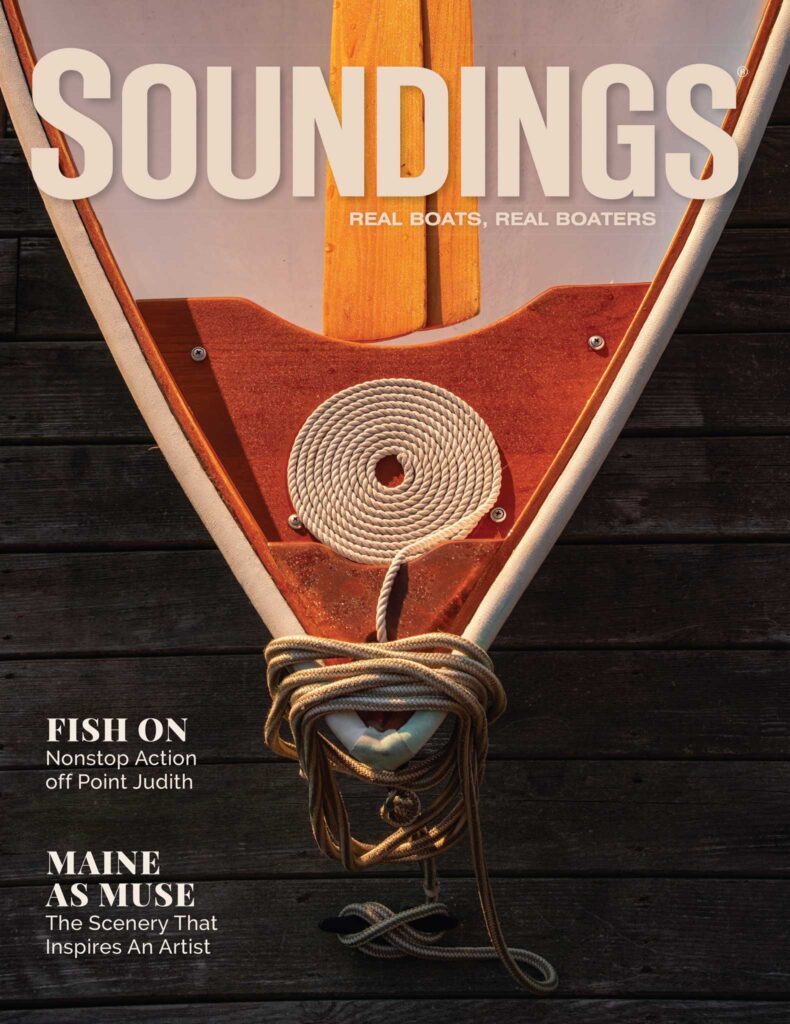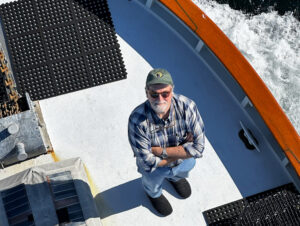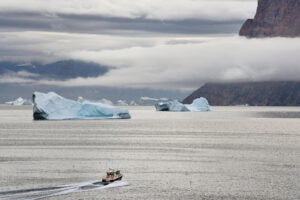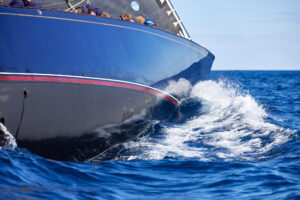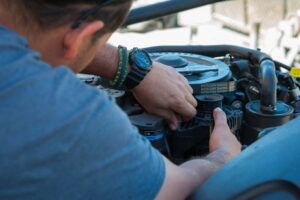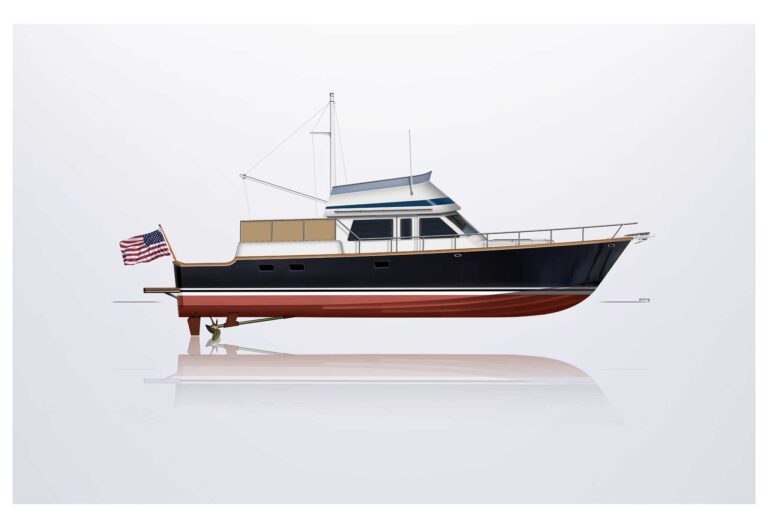I was told long ago to never write stories about pets on boats. People tire of reading them. So I’m not going to write about pets on boats. I’m going to write about dead pets on boats.

As you wind your way down the ICW, you may not know it but you’re also winding your way past innumerable hamster graves. There’s nothing macabre going on; it’s just that we had two daughters who were growing up as we traveled north and south for so many years. Little girls want pets, and their mothers insist. Most of their pets were hamsters. I don’t like rats on a boat no matter what you call them, but my preferences weren’t particularly relevant.
One thing about hamsters is that they seem to die a lot. Not a problem, you may be thinking. Just toss it and stay away from ports with pet stores. But you don’t just toss a “Scruffy” or a “Fluffy” or a “Bilbo” into the sea. You must bury them. You can’t bury them in your backyard because you don’t have one when you live on a boat. And you can’t just bury them on a beach or beside the marina dock because “somebody might walk on them.”
But one of the many good things about traveling down the ICW is that in or near most marinas one can almost always find a “KEEP OFF THE GRASS” sign. Since everyone obeys these signs, all you have to do is walk behind them and dig your tiny little graves. It kills three birds with one stone. (I’d say three hamsters, but the hamster would already be dead.) The hamster will not be trod upon, the grass will have extra fertilization, and the tomb is marked by a monument. Never mind that it says “KEEP OFF THE GRASS” instead of “Here Lies Our Beloved Fluffy.”
While in the Bahamas, we seldom found signs like this. We found something better. In centuries past, seamen built tall rock monuments to mark islands with salt ponds. These were usually on top of the highest hill and often difficult to reach, a perfect place to bury a hamster. As you sail down the Exuma chain today, when you see a lone stone monument high on a hill, you can forget about the salt; shed a tear for a furry little creature that once graced our decks.
As the years rolled under our keel, our little girls grew into bigger girls who wanted different pets — ones that didn’t bite when being dressed in doll clothes. Goldfish seemed a natural fit. They didn’t upset the customs and immigration people, didn’t poop on the deck and were easy to feed and care for. And it was easy to safely wedge a goldfish bowl into a tight corner so it wouldn’t spill. There were plenty of tight corners in the forward cabin, where our daughters lived.
One summer we bought Goldie, who seemed the perfect pet. The following fall we headed back to the Bahamas armed with plentiful supplies to keep her alive, well and happy. (I know she was a “her” because her name was Goldie, not because I tried to “look.”) We headed out the shallow Florida Passage, just south of Biscayne Key, to begin our trip over. It was very rough, and Chez Nous plunged up and down, fighting her way out to deeper water. We finally made it, and the easier swells of the open ocean soothed us all. Until our daughters went forward to feed Goldie lunch.

“Goldie’s not here,” came the disturbed cry.
“Oh, look under her castle or that reef in the bowl. She’s just hiding out,” my wife, Mel, said.
A few moments of silence passed. “Goldie’s not here. She is not in the bowl.”
Mel went forward and looked and looked. No Goldie. She couldn’t have jumped out because we kept the water level low to avoid this, especially at sea. But the hatch had been closed, and we’d had no birds swooping in, so we figured she must have jumped out. My wife and our daughters searched that forward cabin for more than an hour, and repeated the search several times later. Goldie was not there.
Like all good mysteries, this one grew on us in the following days but finally began to subside as one of those inexplicable things in life at sea. Eventually we reached our first island destination, everyone happy to go ashore. The beach was rocky, so we told the young ladies to put on their tennis shoes. As Mel and I were getting ready for the adventure a loud “eeww!” came from up forward. It was Carolyn. “I found Goldie. I squished her with my toes. Eeww, gross.”
We rushed forward to find the remnants up in the toe of one of her shoes. Apparently a glob of water had splashed out when we were plunging through the inlet a few days earlier, and Goldie had taken a ride in it. As luck would have it, she landed in the shoe and flopped her way into darkness, where she expired and began the process of fermenting, which is accomplished so well in the tropics. There was no problem tossing this one.
But there was an issue with a cocoa damselfish. I know the experts say you can’t domesticate a cocoa damselfish. But our daughter Carolyn did. One day while playing in the mangrove tidal flats, she saw it inside the lip of a large conch and poured it into the old goldfish bowl. She’d catch small shrimp from sargassum weed with a fine net as we traveled. Soon, this very special little wild fish was eating from her hands. It was amazing and very touching. Then came the day we were to head back across the Gulf Stream to the United States.
We knew there would be no sargassum weed there and that the water available would quickly kill the fish. Mel had a long talk with Carolyn about the wisdom of letting “Cokie” return to nature by letting her go in the Bahamas waters. With tears in her eyes and pride in her heart about what she was doing for her pet, Carolyn stooped down on a rock on the marina jetty and gently poured the fish back into nature. Before she could get “Goodbye little Cokie” out of her mouth, a barracuda swooped in from under the dock and gulped down Cokie, now truly back to nature. There was no burial issue here, either; just some very serious theological discussions.
Then came Dixie, and I’m not talking about a historical political subdivision. Dixie was a bird. She looked like a parakeet to me, but I was told with some degree of indignation that Dixie was a budgie. Whatever she was, she had wings and lots of colors and made a lot of noise and a lot of bird you-know-what as she supervised the main saloon from her cage, which hung much too close to the galley.
Mel and the girls loved this bird very much. I began (only in the depraved recesses of my subconsciousness) thinking about her funeral very soon. Yes, Dixie was pretty and, yes, she would sing. But she would also bite, and her cage would swing. It’s the way of boats and the way of bird cages hanging on boats. And often we were in very rough anchorages or even rougher seas. When Dixie’s cage swung it slung the bird you-know-what that she had managed to divest herself of all over the place. But I kept my peace, and Dixie lived a sheltered life, loved by all aboard … almost.

One dark night a dirty rat did the dirty deed. He crept aboard while we were tied in a fancy marina and somehow bit her in the leg. Even I was upset by this. I killed the rat, but the damage had been done. So much so that by the time we got down the coast to Fort Lauderdale, Dixie had passed away, despite some very expensive medical treatment. I told you that part of the story in more detail in “Sea Savvy” a few months ago. What I didn’t tell you was that there were no “KEEP OFF THE GRASS” signs around. And in the pecking order of “dearly departed,” birds are considerably higher than rodents. We had a dilemma of major proportions on our hands.
We solved part of it by entombing her in a Dixie sugar box. Our daughters naturally thought that the box had been made just for their bird, but there was still the issue of what to do with bird and coffin. We couldn’t just go to the beach a block away and let it float out to sea because there was a nor’easter blowing. No sugar box was going to float out in those breakers. And we couldn’t bury it on the beach because there were so many tourists polluting the sand with suntan lotion we felt certain that Dixie’s burial place would be callously violated, not to mention soaked in oil. I finally came up with a solution.
We were docked a short walk from the 17th Street Causeway Bridge. Dressed in our finest, our family walked in solemn procession down A1A, carrying our little casket and its feathery contents, holding it out in front of us reverently. When we reached the bridge, we continued on up its sidewalk, heading to the highest part. Looking down we could see the tide racing out to meet the ocean at nearby Port Everglades Inlet. This would be a perfect way, under the circumstances, to have a burial at sea. As we gathered near the top, we paused at the rail, and I held out the Dixie box and said a few words. Then I gently tossed it out downwind. At which point my senses came home with a bang.
Fort Lauderdale was going nuts on the no-littering-the-waterways theme. There had been a recent waterway cleanup. Although there were no “KEEP OFF THE GRASS” signs, there were innumerable warnings about littering the waterway. My brain was reeling as the box headed out and down. But officer, we’re just returning a creature of the wild back to nature. Uh, well, yes, it is a Dixie sugar box, but if you’ll just open it up you’ll find a bird. Then even more horrific thoughts surfaced. It was turning into something from a Stephen King novel.
Passing under the bridge in multitudes were all sorts of fine yachts, including many with flybridges. And consumed in grief as I was, I had forgotten to look upstream before the toss. In the seeming eternity that passed as the coffin fluttered down on the wind, I could imagine some captain piloting his yacht getting splattered on his captain’s cap with our Dixie. Would it soil his white hat? Would it hurt him? Would he kill me? Would this become homicide by deadly bird?
As I held my breath the box mercifully hit only the waves below and headed for the inlet. I kept my thoughts to myself as our family of four solemnly walked down the bridge.
Blest be the tide that binds.
This article originally appeared in the September 2015 issue.

